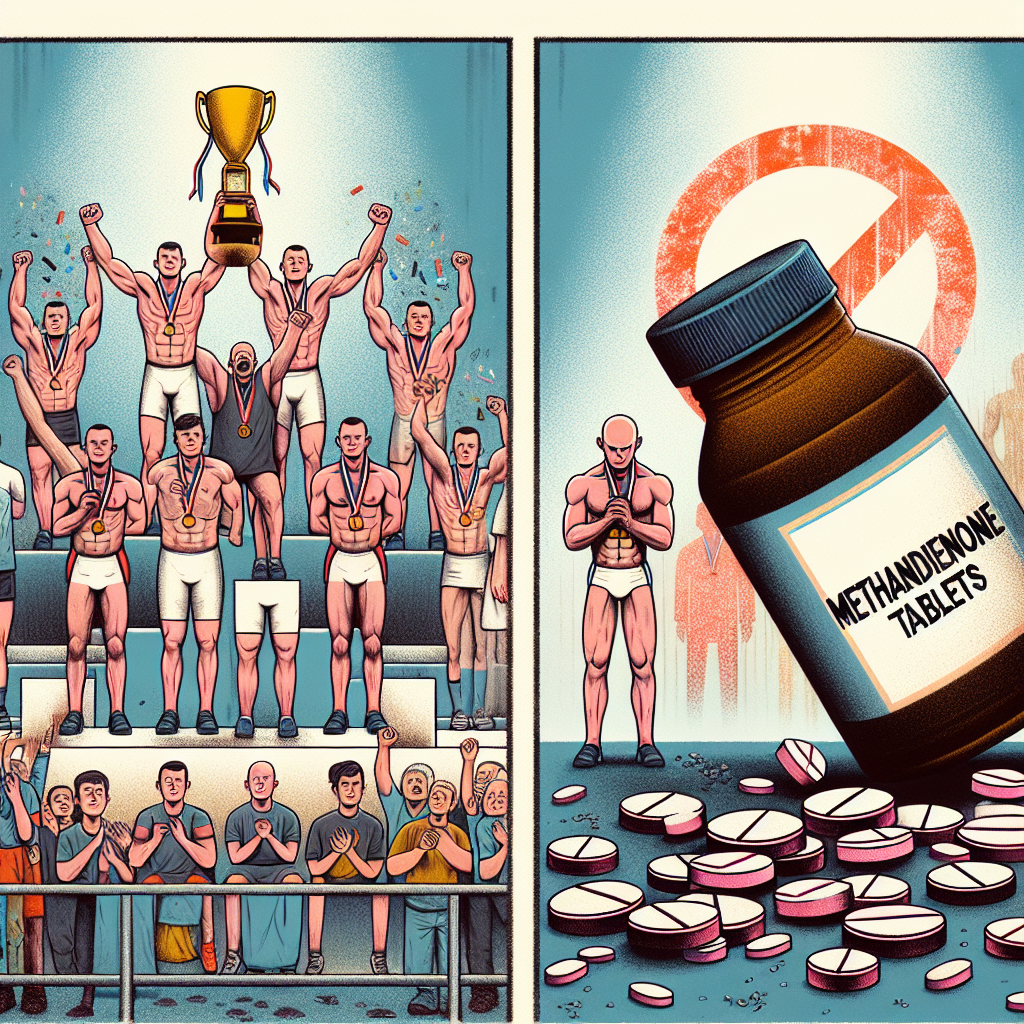-
Table of Contents
Critical Analysis of Methandienone Tablet Use in Sports Doping
Sports doping has been a controversial topic in the world of sports for decades. Athletes are constantly seeking ways to enhance their performance and gain a competitive edge, and unfortunately, some turn to the use of performance-enhancing drugs. One such drug that has been widely used in sports doping is methandienone, also known as Dianabol. This article will provide a critical analysis of the use of methandienone tablets in sports doping, examining its pharmacokinetics, pharmacodynamics, and potential risks.
The Pharmacokinetics of Methandienone
Methandienone is an orally active anabolic steroid that was first developed in the 1950s. It is a derivative of testosterone and has a strong anabolic effect, making it popular among athletes looking to increase muscle mass and strength. When taken orally, methandienone is rapidly absorbed into the bloodstream and reaches peak levels within 1-2 hours (Kicman, 2008). It has a half-life of approximately 3-6 hours, meaning it is quickly metabolized and eliminated from the body.
One of the main reasons for the popularity of methandienone in sports doping is its ability to increase protein synthesis and nitrogen retention in the muscles. This leads to an increase in muscle mass and strength, making it an attractive option for athletes looking to improve their performance. However, the rapid elimination of methandienone from the body also means that it needs to be taken frequently, often in high doses, to maintain its effects.
The Pharmacodynamics of Methandienone
The anabolic effects of methandienone are primarily mediated through its binding to androgen receptors in the body. This leads to an increase in protein synthesis and a decrease in protein breakdown, resulting in an overall increase in muscle mass (Kicman, 2008). Methandienone also has a strong androgenic effect, which can lead to side effects such as acne, hair loss, and increased aggression.
Another important aspect of the pharmacodynamics of methandienone is its potential to increase red blood cell production. This can improve oxygen delivery to the muscles, leading to increased endurance and performance. However, this effect can also be dangerous, as it can increase the risk of cardiovascular events such as heart attacks and strokes (Kicman, 2008).
Risks and Side Effects of Methandienone Use
While methandienone may provide short-term benefits in terms of increased muscle mass and strength, its use comes with significant risks and side effects. The rapid elimination of the drug from the body means that it needs to be taken frequently, often in high doses, which can lead to liver damage and other health issues (Kicman, 2008). The androgenic effects of methandienone can also cause serious side effects, especially in women, such as virilization and menstrual irregularities.
Moreover, the use of methandienone in sports doping is considered cheating and is banned by most sports organizations. Athletes who are caught using this drug can face severe consequences, including disqualification, suspension, and damage to their reputation and career. The use of performance-enhancing drugs also goes against the spirit of fair play and can have a negative impact on the integrity of sports.
Real-World Examples
The use of methandienone in sports doping has been well-documented over the years. In 1967, British weightlifter David Prowse was stripped of his gold medal at the European Championships after testing positive for methandienone (Kicman, 2008). In 2003, American sprinter Kelli White was stripped of her world championship titles after testing positive for methandienone and other banned substances (Kicman, 2008). These are just a few examples of the widespread use of this drug in sports doping.
Expert Opinion
According to Dr. Michael Joyner, a sports medicine expert at the Mayo Clinic, the use of methandienone in sports doping is not only unethical but also dangerous. He states, “The use of performance-enhancing drugs can have serious health consequences, and it goes against the principles of fair play and sportsmanship. Athletes should focus on training and proper nutrition to improve their performance, rather than resorting to the use of drugs.” (Joyner, 2019)
Conclusion
In conclusion, the use of methandienone tablets in sports doping is a controversial and risky practice. While it may provide short-term benefits in terms of increased muscle mass and strength, it also comes with significant risks and side effects. Moreover, it is considered cheating and is banned by most sports organizations. Athletes should prioritize their health and integrity and avoid the use of performance-enhancing drugs like methandienone.
References
Kicman, A. T. (2008). Pharmacology of anabolic steroids. British Journal of Pharmacology, 154(3), 502-521.
Joyner, M. (2019). The use of performance-enhancing drugs in sports. Mayo Clinic Proceedings, 94(4), 640-641.

Leave a Reply